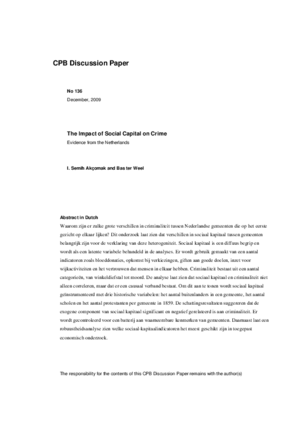The impact of social capital on crime: Evidence from the Netherlands
Meer vertrouwen vermindert criminaliteit in Nederlandse gemeenten
We are sorry, unfortunately there is no English translation of this page.
This research shows that social capital is important in explaining why crime is so heterogeneous across Dutch municipalities.
Social capital is considered as a latent construct composed of a variety of indicators, such as blood donations, voter turnout, voluntary contributions to community well-being, and trust. To isolate exogenous variation in social capital, three historical variables are used as instruments: the fraction of foreigners, the number of schools and the fraction of Protestants in 1859. The historical information provides heterogeneity across municipalities in these three variables.
In an application to Dutch municipalities the 2SLS estimates suggest that the exogenous component of social capital is significantly and negatively correlated with current crime rates, after controlling for a range of contemporaneous socio-economic indicators. Next, the robustness analysis shows why some social capital indicators are more useful than the others in applied economic research.
